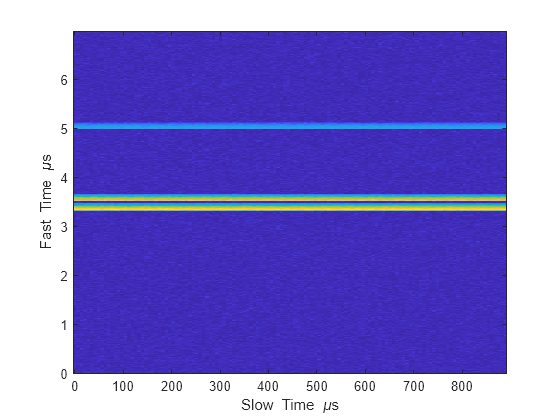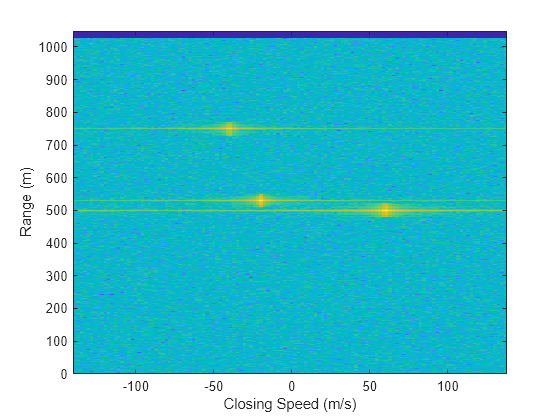step
System object: phased.DopplerEstimator
Namespace: phased
Estimate target Doppler
Syntax
Description
Note
Instead of using the step method to perform
the operation defined by the System object™, you can call the object
with arguments, as if it were a function. For example, y
= step(obj,x) and y = obj(x) perform
equivalent operations.
dopest = step(estimator,resp,dopgrid,detidx)resp. Doppler estimates are
computed for each detection position reported in
detidx. The
dopgrid argument sets the
units for the Doppler dimension of the response
data cube.
You can combine optional input and output arguments when their enabling properties are set.
Optional inputs and outputs must be listed in the same order as the order of the
enabling properties. For example,
[.dopest,dopvar]
= step(estimator,resp,dopgrid,detidx,noisepower,clusterids)
Note
The object performs an initialization the first time the object is executed. This
initialization locks nontunable properties
and input specifications, such as dimensions, complexity, and data type of the input data.
If you change a nontunable property or an input specification, the System object issues an error. To change nontunable properties or inputs, you must first
call the release method to unlock the object.
Input Arguments
Output Arguments
Examples
Version History
Introduced in R2017a


